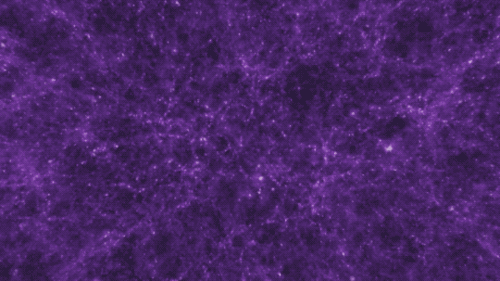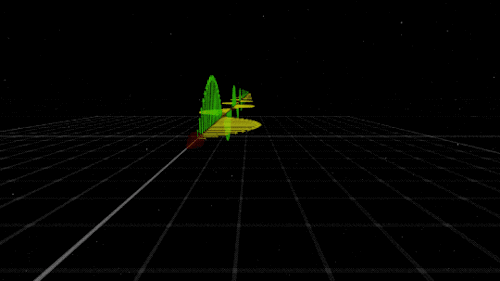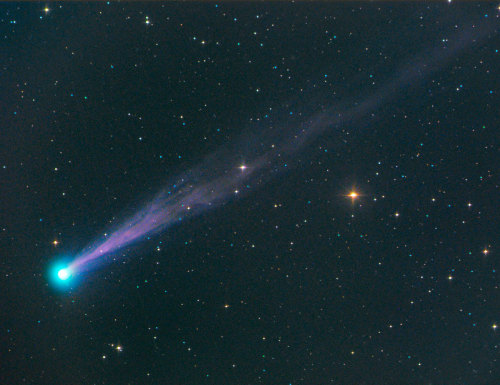In A Sense Cosmology Contains All Subjects Because It Is The Story Of Everything, Including Biology,
In a sense cosmology contains all subjects because it is the story of everything, including biology, psychology and human history.
Peter Theodore Landsberg
WANT MORE? GET YOUR HEAD STUCK IN THE STARS AT MY BLOG!
More Posts from Acosmicgeek and Others
I’m re-watching Crash Course: Astronomy for about the 10 x 10^23 time
Want to join me?
It’s one of my favorites :)
WANT MORE? GET YOUR HEAD STUCK IN THE STARS AT MY BLOG!
It’s easy to forget that thousands of comets, asteroids, and meteors are near us everyday. They seem like such a rarity.
WANT MORE? GET YOUR HEAD STUCK IN THE STARS AT MY BLOG!

Cosmonaut Ivan Vagner obtained this image of the comet NEOWISE a few hours ago from the International Space Station. He says that the dust tail looks very good from there. It is worth enlarging the image.
via reddit
Okay I love the Big Bang Theory (as in the actual scientific theory about the start of our universe) but also the TV show.
(Sheldon was my favorite)
Anyway I didn’t know there was a full version of the theme song and I really like it :)
WANT MORE? GET YOUR HEAD STUCK IN THE STARS AT MY BLOG!
Aw heck yeah let’s go
WANT MORE? GET YOUR HEAD STUCK IN THE STARS AT MY BLOG!
List of extrasolar candidates for liquid water
The following list contains candidates from the list of confirmed objects that meet the following criteria:
Confirmed object orbiting within a circumstellar habitable zone of Earth mass or greater (because smaller objects may not have the gravitational means to retain water) but not a star
Has been studied for more than a year
Confirmed surface with strong evidence for it being either solid or liquid
Water vapour detected in its atmosphere
Gravitational, radio or differentation models that predict a wet stratum
55 Cancri f

With a mass half that of Saturn, 55 Cancri f is likely to be a gas giant with no solid surface. It orbits in the so-called “habitable zone,” which means that liquid water could exist on the surface of a possible moon. ]
Proxima Centauri b

Proxima Centauri b is an exoplanet orbiting in the habitable zone of the red dwarfstar Proxima Centauri, which is the closest star to the Sun and part of a triple star system. It is located about 4.2 light-years from Earth in the constellation of Centaurus, making it the closest known exoplanet to the Solar System.
Gliese 581c

Gliese 581c gained interest from astronomers because it was reported to be the first potentially Earth-like planet in the habitable zone of its star, with a temperature right for liquid water on its surface, and by extension, potentially capable of supporting extremophile forms of Earth-like life.
Gliese 667 Cc

Gliese 667 Cc is an exoplanet orbiting within the habitable zone of the red dwarf star Gliese 667 C, which is a member of the Gliese 667 triple star system, approximately 23.62 light-years away in the constellation of Scorpius.
Gliese 1214 b

Gliese 1214 b is an exoplanet that orbits the star Gliese 1214, and was discovered in December 2009. Its parent star is 48 light-years from the Sun, in the constellation Ophiuchus. As of 2017, GJ 1214 b is the most likely known candidate for being an ocean planet. For that reason, scientists have nicknamed the planet “the waterworld”.
HD 85512 b

HD 85512 b is an exoplanet orbiting HD 85512, a K-type main-sequence star approximately 36 light-years from Earth in the constellation of Vela.
Due to its mass of at least 3.6 times the mass of Earth, HD 85512 b is classified as a rocky Earth-size exoplanet (<5M⊕) and is one of the smallest exoplanets discovered to be just outside the inner edge of the habitable zone.
MOA-2007-BLG-192Lb

MOA-2007-BLG-192Lb, occasionally shortened to MOA-192 b, is an extrasolar planet approximately 3,000 light-years away in the constellation of Sagittarius. The planet was discovered orbiting the brown dwarf or low-mass star MOA-2007-BLG-192L. At a mass of approximately 3.3 times Earth, it is one of the lowest-mass extrasolar planets at the time of discovery. It was found when it caused a gravitational microlensing event on May 24, 2007, which was detected as part of the MOA-II microlensing survey at the Mount John University Observatory in New Zealand.
Kepler-22b

Kepler-22b, also known by its Kepler object of interest designation KOI-087.01, is an extrasolar planet orbiting within the habitable zone of the Sun-like star Kepler-22. It is located about 587 light-years (180 pc) from Earth in the constellation of Cygnus. source
I love supermassive black holes!!!
Expect this in the chapter about black holes lol
The relationship between SBHs and their host galaxies are so cool!
WANT MORE? GET YOUR HEAD STUCK IN THE STARS AT MY BLOG!




AAS NOVA
A Young Population of Hidden Jets
By Susanna Kohler
Looking for a fireworks show this 4th of July? Try checking out the distant universe, where powerful jets flung from supermassive black holes slam into their surroundings, lighting up the sky.
Though these jets are hidden behind shrouds of gas and dust, a new study has now revealed some of these young powerhouses.
A Galaxy–Black-Hole Connection
In the turbulent centers of active galaxies (active galactic nuclei, or AGN), gas and dust rains onto supermassive black holes of millions to billions of solar masses, triggering dramatic jets that plow into the surrounding matter and light up across the electromagnetic spectrum.
The growth of a supermassive black hole is thought to be closely tied to the evolution of its host galaxy, and feedback like these jets may provide that link. As the jets collide with the gas and dust surrounding the galaxy’s nucleus, they can trigger a range of effects — from shock waves that drive star formation, to gas removal that quenches star formation.
To better understand the connections between supermassive black holes and their host galaxies, we’d especially like to observe AGN at a time known as Cosmic Noon. This period occurred around 10 billion years ago and marks a time when star formation and supermassive black hole growth was at its strongest.
The Hidden World of Cosmic Noon
But there’s a catch: around Cosmic Noon, galaxies were heavily shrouded in thick gas and dust. This obscuring material makes it difficult for us to observe these systems in short wavelengths like optical and X-ray. Instead, we have to get creative by searching for our targets at other wavelengths.
Since AGN emission is absorbed by the surrounding dust and re-radiated in infrared, we can use infrared brightness to find obscured but luminous sources. To differentiate between hidden clumps of star formation and hidden AGN, we also look for a compact radio source — a signature that points to a jet emitted from a central black hole.
A team of scientists led by Pallavi Patil (University of Virginia and the National Radio Astronomy Observatory) has now gone on the hunt for these hidden sources at Cosmic Noon.
Newly-Triggered Jets Caught in the Act
Patil and collaborators observed a sample of 155 infrared-selected sources, following up with high-resolution imaging from the Jansky Very Large Array to identify compact radio sources. From their observations and modeling of the jets, the authors estimate these sources’ properties.
The authors find bright luminosities, small sizes, and high jet pressures — all of which suggest that we’ve caught newly-triggered jets in a short-lived, unique phase of AGN evolution where the jets are still embedded in the dense gas reservoirs of their hosts. The jets are expanding slowly because they have to work hard to push through the thick clouds of surrounding material. Over time, the jets will likely expand to larger scales and clear out the surrounding matter, causing the sources to evolve into more classical looking radio galaxies.
What’s next? The authors are currently working on a companion study to further explore the shapes of the jets and their immediate environments. These young, hidden sources will provide valuable insight into how supermassive black holes evolve alongside their host galaxies.
Citation “High-resolution VLA Imaging of Obscured Quasars: Young Radio Jets Caught in a Dense ISM,” Pallavi Patil et al 2020 ApJ 896 18. doi:10.3847/1538-4357/ab9011
TOP IMAGE….Artist’s impression of a galaxy forming stars, as powerful jets that are flung from its central black hole collide with the surrounding matter. [ESO/M. Kornmesser]
CENTRE IMAGE….This composite image of Centaurus A shows an example of large-scale jets launched from an AGN, which can eventually extend far beyond the galaxy, as seen here. [ESO/WFI (Optical); MPIfR/ESO/APEX/A.Weiss et al. (Submillimetre); NASA/CXC/CfA/R.Kraft et al. (X-ray)]
LOWER IMAGE….The redshift distribution of the authors’ sample, based on spectroscopic redshifts of 71 sources. The sources span the period of peak star formation and black hole fueling around Cosmic Noon. [Patil et al. 2020]
BOTTOM IMAGE….The JVLA 10 GHz radio continuum observations for four sources in the authors’ sample. The cyan plus symbol marks the infrared-obtained source position. The color bars indicate flux in mJy/beam. [Adapted from Patil et al. 2020]
Woah :o
So, basically, like the Mission Space ride at Epcot (that one is my favoriteeeee)?
WANT MORE? GET YOUR HEAD STUCK IN THE STARS AT MY BLOG!

Testing and Training on the Boeing Starliner : NASA astronaut Mike Fincke works through a check list inside a mockup of Boeing’s CST-100 Starliner during a simulation at NASA’s Johnson Space Center on Aug. 21, 2019. (via NASA)
That’s a great explanation of particle physics xD
But really, this stuff is so interesting! I love reading about stuff like this - so good work NASA!
If you liked the four forces governing the universe, you might like this book I just finished reading for the seventh time (Neil DeGrasse Tyson’s “Astrophysics for People in a Hurry”). It talks about these forces and a lot of other really cool concepts, like dark energy and chemistry-related-to-space.
WANT MORE? GET YOUR HEAD STUCK IN THE STARS AT MY BLOG!
May the Four Forces Be With You!
May the force be with you? Much to learn you still have, padawan. In our universe it would be more appropriate to say, “May the four forces be with you.”

There are four fundamental forces that bind our universe and its building blocks together. Two of them are easy to spot — gravity keeps your feet on the ground while electromagnetism keeps your devices running. The other two are a little harder to see directly in everyday life, but without them, our universe would look a lot different!
Let’s explore these forces in a little more detail.
Gravity: Bringing the universe together

If you jump up, gravity brings you back down to Earth. It also keeps the solar system together … and our galaxy, and our local group of galaxies and our supercluster of galaxies.
Gravity pulls everything together. Everything, from the bright centers of the universe to the planets farthest from them. In fact, you (yes, you!) even exert a gravitational force on a galaxy far, far away. A tiny gravitational force, but a force nonetheless.

Credit: NASA and the Advanced Visualization Laboratory at the National Center for Supercomputing and B. O'Shea, M. Norman
Despite its well-known reputation, gravity is actually the weakest of the four forces. Its strength increases with the mass of the two objects involved. And its range is infinite, but the strength drops off as the square of the distance. If you and a friend measured your gravitational tug on each other and then doubled the distance between you, your new gravitational attraction would just be a quarter of what it was. So, you have to be really close together, or really big, or both, to exert a lot of gravity.
Even so, because its range is infinite, gravity is responsible for the formation of the largest structures in our universe! Planetary systems, galaxies and clusters of galaxies all formed because gravity brought them together.
Gravity truly surrounds us and binds us together.
Electromagnetism: Lighting the way

You know that shock you get on a dry day after shuffling across the carpet? The electricity that powers your television? The light that illuminates your room on a dark night? Those are all the work of electromagnetism. As the name implies, electromagnetism is the force that includes both electricity and magnetism.
Electromagnetism keeps electrons orbiting the nucleus at the center of atoms and allows chemical compounds to form (you know, the stuff that makes up us and everything around us). Electromagnetic waves are also known as light. Once started, an electromagnetic wave will travel at the speed of light until it interacts with something (like your eye) — so it will be there to light up the dark places.

Like gravity, electromagnetism works at infinite distances. And, also like gravity, the electromagnetic force between two objects falls as the square of their distance. However, unlike gravity, electromagnetism doesn’t just attract. Whether it attracts or repels depends on the electric charge of the objects involved. Two negative charges or two positive charges repel each other; one of each, and they attract each other. Plus. Minus. A balance.
This is what happens with common household magnets. If you hold them with the same “poles” together, they resist each other. On the other hand, if you hold a magnet with opposite poles together — snap! — they’ll attract each other.
Electromagnetism might just explain the relationship between a certain scruffy-looking nerf-herder and a princess.
Strong Force: Building the building blocks

Credit: Lawrence Livermore National Laboratory
The strong force is where things get really small. So small, that you can’t see it at work directly. But don’t let your eyes deceive you. Despite acting only on short distances, the strong force holds together the building blocks of the atoms, which are, in turn, the building blocks of everything we see around us.
Like gravity, the strong force always attracts, but that’s really where their similarities end. As the name implies, the force is strong with the strong force. It is the strongest of the four forces. It brings together protons and neutrons to form the nucleus of atoms — it has to be stronger than electromagnetism to do it, since all those protons are positively charged. But not only that, the strong force holds together the quarks — even tinier particles — to form those very protons and neutrons.
However, the strong force only works on very, very, very small distances. How small? About the scale of a medium-sized atom’s nucleus. For those of you who like the numbers, that’s about 10-15 meters, or 0.000000000000001 meters. That’s about a hundred billion times smaller than the width of a human hair! Whew.
Its tiny scale is why you don’t directly see the strong force in your day-to-day life. Judge a force by its physical size, do you?
Weak Force: Keeping us in sunshine

If you thought it was hard to see the strong force, the weak force works on even smaller scales — 1,000 times smaller. But it, too, is extremely important for life as we know it. In fact, the weak force plays a key role in keeping our Sun shining.
But what does the weak force do? Well … that requires getting a little into the weeds of particle physics. Here goes nothing! We mentioned quarks earlier — these are tiny particles that, among other things, make up protons and neutrons. There are six types of quarks, but the two that make up protons and neutrons are called up and down quarks. The weak force changes one quark type into another. This causes neutrons to decay into protons (or the other way around) while releasing electrons and ghostly particles called neutrinos.
So for example, the weak force can turn a down quark in a neutron into an up quark, which will turn that neutron into a proton. If that neutron is in an atom’s nucleus, the electric charge of the nucleus changes. That tiny change turns the atom into a different element! Such reactions are happening all the time in our Sun, giving it the energy to shine.
The weak force might just help to keep you in the (sun)light.

All four of these forces run strong in the universe. They flow between all things and keep our universe in balance. Without them, we’d be doomed. But these forces will be with you. Always.
You can learn more about gravity from NASA’s Space Place and follow NASAUniverse on Twitter or Facebook to learn about some of the cool cosmic objects we study with light.
Make sure to follow us on Tumblr for your regular dose of space: http://nasa.tumblr.com

... why.
There are no aliens - so the only thing we could use this as is like a nuke - but that would destroy the entire Earth xD
WANT MORE? GET YOUR HEAD STUCK IN THE STARS AT MY BLOG!
Ooo, that’s pretty cool
Also - a nice little teaser - we’ll be covering brown dwarfs in the next chapter of the Life of a Star!
WANT MORE? GET YOUR HEAD STUCK IN THE STARS AT MY BLOG!

ASTRONOMERS FIND JUPITER-LIKE CLOUD BANDS ON CLOSEST BROWN DWARF
A team of astronomers has discovered that the closest known brown dwarf, Luhman 16A, shows signs of cloud bands similar to those seen on Jupiter and Saturn. This is the first time scientists have used the technique of polarimetry to determine the properties of atmospheric clouds outside of the solar system, or exoclouds.
Brown dwarfs are objects heavier than planets but lighter than stars, and typically have 13 to 80 times the mass of Jupiter. Luhman 16A is part of a binary system containing a second brown dwarf, Luhman 16B. At a distance of 6.5 light-years, it’s the third closest system to our Sun after Alpha Centauri and Barnard’s Star. Both brown dwarfs weigh about 30 times as much as Jupiter.
Despite the fact that Luhman 16A and 16B have similar masses and temperatures (about 1,900°F, or 1,000°C), and presumably formed at the same time, they show markedly different weather. Luhman 16B shows no sign of stationary cloud bands, instead exhibiting evidence of more irregular, patchy clouds. Luhman 16B therefore has noticeable brightness variations as a result of its cloudy features, unlike Luhman 16A.
“Like Earth and Venus, these objects are twins with very different weather,” said Julien Girard of the Space Telescope Science Institute in Baltimore, Maryland, a member of the discovery team. “It can rain things like silicates or ammonia. It’s pretty awful weather, actually.”
The researchers used an instrument on the Very Large Telescope in Chile to study polarized light from the Luhman 16 system. Polarization is a property of light that represents the direction that the light wave oscillates. Polarized sunglasses block out one direction of polarization to reduce glare and improve contrast.
“Instead of trying to block out that glare, we’re trying to measure it,” explained lead author Max Millar-Blanchaer of the California Institute of Technology (Caltech) in Pasadena, California.
When light is reflected off of particles, such as cloud droplets, it can favor a certain angle of polarization. By measuring the preferred polarization of light from a distant system, astronomers can deduce the presence of clouds without directly resolving either brown dwarf’s cloud structure.
“Even from light-years away, we can use polarization to determine what the light encountered along its path,” added Girard.
“To determine what the light encountered on its way we compared observations against models with different properties: brown dwarf atmospheres with solid cloud decks, striped cloud bands, and even brown dwarfs that are oblate due to their fast rotation. We found that only models of atmospheres with cloud bands could match our observations of Luhman 16A,” explained Theodora Karalidi of the University of Central Florida in Orlando, Florida, a member of the discovery team.
The polarimetry technique isn’t limited to brown dwarfs. It can also be applied to exoplanets orbiting distant stars. The atmospheres of hot, gas giant exoplanets are similar to those of brown dwarfs. Although measuring a polarization signal from exoplanets will be more challenging, due to their relative faintness and proximity to their star, the information gained from brown dwarfs can potentially inform those future studies.
NASA’s upcoming James Webb Space Telescope would be able to study systems like Luhman 16 to look for signs of brightness variations in infrared light that are indicative of cloud features. NASA’s Wide Field Infrared Survey Telescope (WFIRST) will be equipped with a coronagraph instrument that can conduct polarimetry, and may be able to detect giant exoplanets in reflected light and eventual signs of clouds in their atmospheres.
IMAGE….Astronomers have found evidence for a striped pattern of clouds on the brown dwarf called Luhman 16A, as illustrated here in this artist’s concept. The bands of clouds were inferred using a technique called polarimetry, in which polarized light is measured from an astrophysical object much like polarized sunglasses are used to block out glare. This is the first time that polarimetry has been used to measure cloud patterns on a brown dwarf. The red object in the background is Luhman 16B, the partner brown dwarf to Luhman 16A. Together, this pair is the closest brown dwarf system to Earth at 6.5 light-years away. CREDITS: Caltech/R. Hurt (IPAC)
-
 acosmicgeek reblogged this · 5 years ago
acosmicgeek reblogged this · 5 years ago

